Brands, either big or small, know that the present and the future of advertising take place on the Internet. Millions of people access the web daily, looking for information or entertainment on different platforms.
Even though there are multiple options when it comes to browsing the Internet, either Baidu, Bing, or others, Google stands out by far since it boasts 90.68% of the market. This fact makes Google one of the best options to advertise on the Internet. The specialized platform of Google for advertising is Google Ads.
But do you know exactly What Google Ads is?
Google Ads is Google’s service for positioning ads throughout the Google network and thousands of related websites. If you’re interested in creating your first Google ads campaign, this is the article for you!
- What Is Google Ads?
- How Google Ads Work?
- Google Ads Metric/bid Strategy Google Ads
- Types of Google Ads
- Google Ads Extensions
- Keywords Google Ads
- How to Create Google Ads
- How to Optimize Google Ads
- Google Ads Strategy
- Google Ads Example / Case Study / Success Story
- Google Ads Management Services
- The Bottom Line
What Is Google Ads?

Source: Support.Google.
Google Ads, formerly Google Adwords, is Google’s advertising platform that allows businesses, marketers, retailers, and particulars to promote their products through ads across several Google services, such as the Google search engine, the Google Display Network, and YouTube.
Google Ads offers several types of Google Ads campaigns for creators who want to reach particular goals. For example, you can create a search ad campaign in which ads appear on the search engine results page or a shopping ad campaign with ads spawning at the top of the search engine as products on sale.
How Google Ads Work?
The functionality of the Google Ads platform can be a bit complex for most people, but the truth is that knowing the key components will allow you to learn how the platform works.
Google Ads features multiple algorithms that consider several factors, such as bidding, relevant keywords, budget, ad structure, and the Google Quality Score, to place your ads in different ad placements and networks. Let’s check the main concepts you need to know to understand how Google Ads works.
Google Ads Account Structure
Google Ads is basically structured in three layers, and its organization is hierarchical. It means lower categories are subordinated to higher categories and depend directly on them. Understanding the connection and functionality between layers will allow you to structure your Google ads campaign well, target the right audience, and reach your campaign goals faster. The three layers of interaction are Accounts, Campaigns, and Ad Groups.
- Google Account. You probably will have a single account associated with your Gmail account, password, and payment methods. The Google account is the base of any Google Ad campaign.
- Campaigns. This layer entails all the campaigns you create and administer. Keep in mind that you can run several campaigns at the same time with different budgets, settings, goals, and billing information.
- Ad Groups. These correspond to the lowest level and contain all the ads you create for each campaign. Each ad group encompasses particular ad keywords, ad extensions, and more.
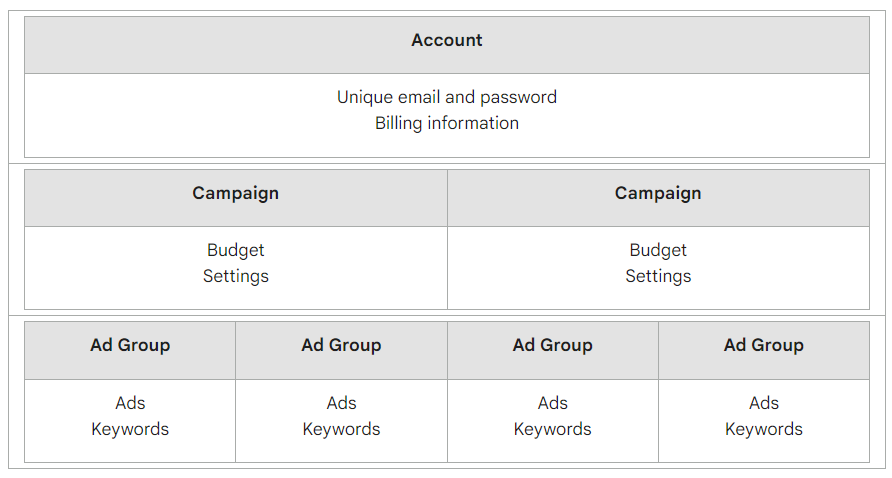
Source: Support.Google.
Note. In order to create different video ads, you need to create different ad groups. In other words, if you create a TrueView in-stream video ad, you can only create another TrueView in-stream video ad in the same group.
Google Ads Quality Score

The Ad Quality Score is a measure and a qualification that Google gives to any ad, estimating the user experience level. In this sense, Google provides every ad with an ad rank to define which one will appear in the first place on the search engine results page.
The Ad Quality Score of every ad is based on multiple factors and algorithms, such as the relevance of the ad for the industry, the general UX, and even the quality of the landing page where the ad drives.
In general, it’s considered that the expected Click-Through Rate (CTR) plus the ad relevance and the landing page experience are the factors that determine the Google Ads Quality Score. However, Google has been strictly hermetic regarding the formula, so nobody knows how exactly the Quality Score is calculated.
What Can Affect the Ad Quality Score?
The ad quality score directly affects the position of your ad on SERPs. Still, it can bring other effects related to your ad campaign.
- Whether your ad is eligible to be shown. Your ad needs to meet certain criteria to be displayed in SERPs. In other words, if the ad does not reach a determined quality score, it will not appear.
- The position of your ad. The Google search network evaluates all the components of your and other marketers’ ads to display in different positions on SERPs. The higher the ad quality score, the higher the position in SERPs, even reaching the top of results.
- The Google ads cost. In general, you will pay for every click on your ads. In this sense, the ad quality score is a good indicator of how much you will pay for every click. This action is also known as the Pay-per-Click billing method. Commonly, a high-quality score means you’re paying less for your ads, and, on the contrary, a low-quality score means a high PPC, even very close to your maximum CPC.
- The performance of your ad campaign. The quality score affects how your ads work and their effectiveness in enticing people to click on them. As such, high-quality ads and landing pages get a higher quality score, in addition to leading to more clicks and conversions.
Google Ads Adrank

Source: Quora.
Ad Rank refers to a value used by Google to determine the position where your ads will appear in relation to other ads. Every time your ad is eligible to appear in SERPs or other networks, the ad rank is recalculated. Then, an auction defines which ad is over another and how they are positioned.
The ad rank is recalculated according to the context of the person’s search, the competition, and the ad quality score of the moment.

There are six main factors determining the ad rank of your ad campaigns.
- Advertisers bid. When you set up your ad by inserting keywords, you bid on the maximum amount you’re willing to pay every time a person clicks on your ad. Commonly, when you use Google ads, you end up paying less than the original bid.
- The quality of ads and landing pages. Google also checks the importance of the ad for the industry and the landing page where the ad leads. These two aspects are summarized in the quality score, which you can monitor in your Google Ads Account.
- The ad rank thresholds. Google establishes minimum thresholds your ads must overpass to be selected to appear in search results.
- The competition of an auction. When you set a bid, an auction begins. It is when you and other marketers compete for the best ad placement. A gap is generated when competing. As the gap grows, the ad with the highest rank will have more possibilities of winning the auction, but it will also pay more to ensure victory.
- The context of users’ search. When calculating the ad rank, Google considers the terms that the searcher uses, the searcher’s location, the time of the day, the device, and the nature of the terms. All this corresponds to the context of the search. These are signals and attributes that define if your ad is relevant for the searcher.
- The expected impact of your ads and other formats. When creating your ads, you can insert additional information. This data is known as ad extension. It can be a location, a phone number, or sitelinks to a particular page on your website. This way, Google can more precisely determine if your ad is relevant for the user.
Note. You can monitor and track where your ads appear on the search results page by checking your top and absolute metrics.
Google Ads vs. Social Media

You can also advertise on different social media channels such as Facebook, Instagram, TikTok, and other platforms. Hence, a natural question comes to the scene: which approach is better for your purposes? Google Ads or Social Media?
Social media advertising is great for increasing brand awareness, especially among audiences that still do not anything about your products. Social media is also cheaper than general Google Ads campaigns.
According to Agencyjet, the average CPC across all the industries on Google Ads is $2.69, but it changes according to the industry, as you can see in the image below.

Source: Wordstream.
On the other hand, the average CPC for social media ads goes from $0.38 to $5.26, depending on the industry, according to Nutshell. This website also provides us with a clarifying table regarding the average CPC on several social media platforms.
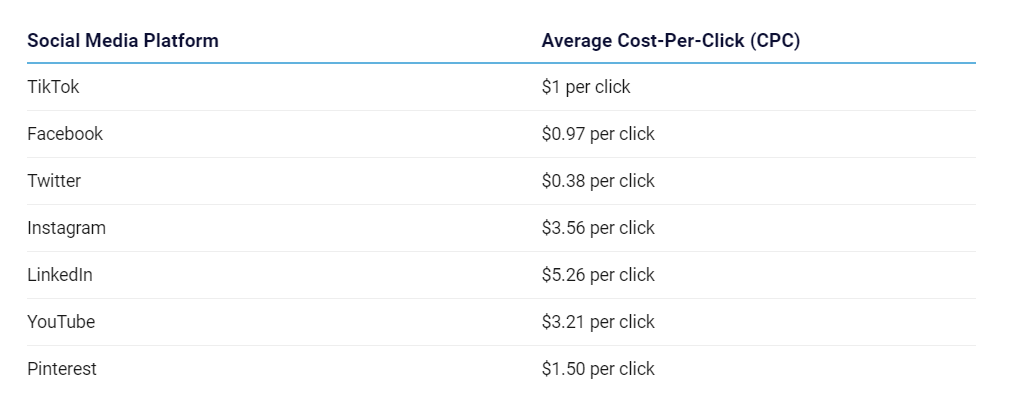
Still, both strategies, Google Ads and social media advertising, have pros and cons you should know before releasing your campaign.
How to Get Google Ads Certification

As its name suggests, a Google Ads certification is a professional accreditation provided by Google that gives marketers, retailers, and users a document that certifies their knowledge and proficiency in basic and advanced features of the Google online advertising platform. It is the way that Google demonstrates that you’re competent in advertising and creating smart campaigns. Currently, there are eleven Google Ads certifications to which you can apply.
- Google Ads Search.
- Google Ads Video.
- Google Ads Display.
- Google Shopping Ads.
- Google Ads Apps.
- Google Ads Search Professional.
- Google Ads Video Professional.
- Google Ads Display Professional.
- Google Ads Creative.
- Grow Offline Sales.
- Google Ads Measurement.
Some benefits of getting a Google Ads certification are the following:
- Demonstrate expertise to clients and prospects. Demonstrating you’re a prominent advertising professional or you manage a digital marketing agency will undoubtedly help you to reach more clients and close deals.
- Boost your company to become a Google partner of the Google Partners program. A Google Ads certification can let you participate in Google Ad Exchange, a professional platform where marketers take part in auctions to get the best advertisers’ ad placements.
Google Ads Metric/bid Strategy Google Ads
Let’s check the main metrics for Google Ads you should utilize when analyzing the performance of the ads of your campaigns, whether they are search ads, smart shopping campaigns, or others.
CPA

CPA, or Cost-per-Action (sometimes called Cost-per-Acquisition), is a metric most marketers use to define how much they pay when a user completes a particular action. For example, when a user subscribes to a newsletter or creates an account on the marketer’s website, it has to pay a determined amount of money.
ROAS Google Ads

ROAS, or Return on Ad Spend, corresponds to the amount of money you receive in return after paying the total ad costs. Knowing this metric will help you to understand if your campaign is working or not, in other words, if it is giving good earnings in return. Calculating it is very easy: just divide the total profits of the campaign by the ad spend.
ROI

ROI, or Return on Investment, is very similar to ROAS, but the first entails all your investments while creating ads. In other words, ROI corresponds to the percentage of total profits made from your ads and product listings.
For instance, you have a product whose production costs $100 and that you can sell for $200. You sell 10 items of these products thanks to Google Ads. So, your total sales are $2,000, and the ad costs are $200. Your ROI is the following:
ROI = ($2,000 – ($1000+$200))/($1000+$200) = 66%
CPC

CPC, or Cost-per-Click, is the most common bidding method when advertising in Google Ads. As its name indicates, it’s a type of revenue model where you pay every time a user clicks a particular ad when the ad appears on any of the Google platforms, like the search network.
As we mentioned in a previous section, when setting the amount you’re willing to pay for each click, you participate in a Google ads auction. This is when you establish the cost-per-click for that particular campaign.
CPM

CPM stands for Cost-per-Mille or Cost-per-Thousand Impressions. It’s a very common metric on radios, television, and other media channels and indicates how much it costs to show a particular ad or publicity to a thousand viewers. It’s a very useful revenue model to calculate detailed costs, especially when you create a huge advertising campaign looking to entice thousands and thousands of clients.
Conversion

Source: Matomo.org.
Conversion in Google Ads is the action of turning a prospect into a client by completing a purchase. The main goal of most businesses is to get the highest conversion rate possible. It means ensuring that the greatest number of users who click on the ad complete an effective purchase.
Conversion Value
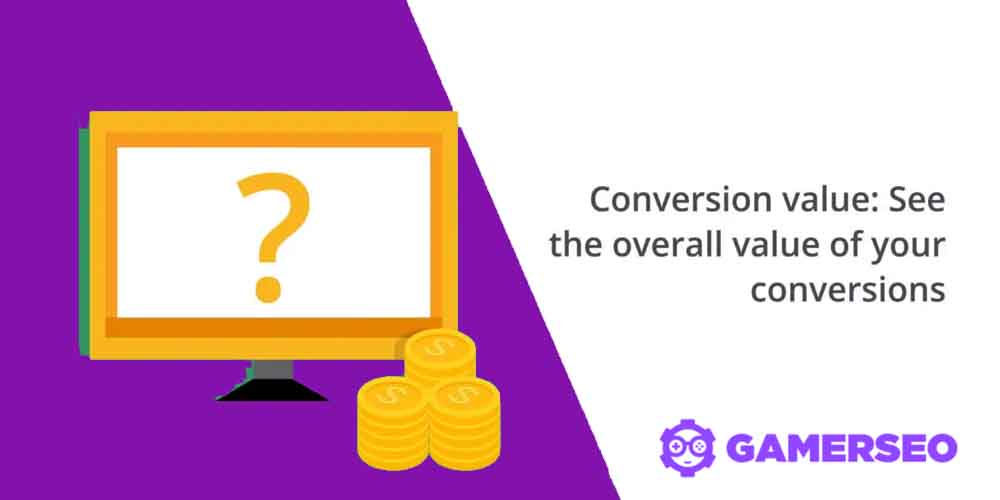
The conversion value of Google Ads is a relevant metric that businesses use to understand the effectiveness of their ad campaigns. It is a monetary value related to a particular action derived from a specific ad, such as a sale or lead. Businesses learn if the PPC campaign is worth it thanks to this number. The formula for conversion value is very simple:
Conversion value = Total number of conversions / Total number of actions
Some benefits of the conversion value are the following:
- You get a better insight into total conversions. The conversion value gives you a closer look at what is happening with your ads. It also helps you to track ROI and identify keywords and ad groups that deliver a high or low return on investment.
- You’ll be able to carry out a smarter bidding. An automated bid strategy uses the conversion value to set up your daily bid and provide the best performance. You may want to target ROAS to maximize conversions and profit margins. You can also maximize the conversion value by selecting optimizing bids for auctions.
Conversion Rate

The conversion rate indicates the real effectiveness of an ad or even a campaign. Obtaining the conversion rate allows you to know if you need to modify your ads or change the approach of your campaign.
Types of Google Ads
Google Ads allows you to create several types of ads with unique features, pros, and cons. They also appear on different networks and bring unique benefits to your brand.
Google Search Ads

Source: Gitnux.
Search ads are text advertisements that appear in the search results pages of Google, at the top of the page, above organic results, and in other positions within the pages. Search ads work through a PPC billing method, which means you pay any time a user clicks on a particular ad. The amount you pay depends on the bid you set when creating the ad and other factors like competition, etcetera. The same is true for an app ad campaign.
Dynamic Search Ads

Dynamic ads are a particular type of advertisement that automatically creates headlines and landing pages based on the data that bots extract and crawl from a particular website. It allows marketers to save precious time and create online ads that match the intent of the user’s search query better.
Since dynamic ads take a significant keyword phrase of your most visited pages, they are capable of delivering accurate online ads that will look very natural and organic to common eyes. If you’re not sure about what type of ad to create or what type of data you should include, let the AI build the most suitable for your advertising campaign. Often, Google determines the best option for you.
Performance Max Google Ads

Source: Embryo.com.
Performance Max is a type of Google Ads campaign that allows you to sort and access all your ad inventory, from the most relevant ads to those whose performance is deficient, in one place. Performance Max ad campaigns are a great advantage, especially when you want to cover a big segment and multiple platforms across Google Search and Display networks. Performance Max includes responsive search ads, banner ads, shopping ads, YouTube ads, and more. Some benefits of Performance Max campaigns are the following:
- They bring better results. Performance Max campaigns boast an average of 18% more conversions at a similar CPA, according to Google.
- You reach a wide range of customers. You will only manage a single campaign to reach different goals, promoting your brand or product on a single platform.
- Performance Max campaigns automate processes. You will only create the ad copy, the asset, and the audience signal, and the campaign will do the rest on your behalf.
What Are Google Display Ads

Source: Gitnux.
Google display ads are advertisements that appear in the Google Display Network, which contains more than one thousand websites worldwide. This way, your visual ads can spawn in some of the best sites related to your industry. Display ads don’t appear in the Google search results but in relevant websites in your industry to significantly increase the brand awareness of your ad business.
- Display ads reach a wider range of prospects. Since these appear in thousands of sites and applications, your ad will always be present, and a single ad click away.
- These ads allow you to create campaigns around your goals. Display ads allow you to maximize results revolving around particular goals, such as getting leads, more traffic, or increasing awareness.
- Impressive results in a matter of seconds. You only create the blocks and headers, and Google will select the best combinations for your ads.
What Are Google Shopping Ads

Source: Zipdo.
Shopping ads aim at enticing customers to a particular product or service by highlighting its benefits and characteristics. These ads are designed to provide crucial data on the product and sell it by facilitating the purchasing process. Shopping ads appear at the top of the screen, above the search results, and display an image, features, and price.
Being able to create shopping ads involves creating a Google Merchant Center account and a feed containing all the information about products, such as the stock, price, special characteristics, offers, and more.
What Are Google Discovery Ads

Source: Lunio.ai.
Discovery ads are a special type of ad since they allow you to attract searchers and users ready to know more about your brand and products and engage with your message. Google Ads determines appropriate users and automatically displays image ads on the YouTube homepage, Discover, Gmail promotions, and more.
One of the most important benefits of discovery ads is that they will give you the final push to customers and Google users who are already looking for a product or service like yours. This action elevates the possibilities to complete conversions.
Google Video Ads

Source: Herenow.film.
Google Video ads are advertisements that appear on YouTube and external platforms associated with the platform. There are various types of Google video ads – skippable ads, non-skippable ads, bumper ads, masthead ads, etcetera. The main difference is the duration of the ad or if you can skip it.
YouTube ads are strongly based on keyword research that the user’s intent, so they are great for driving people to your web page of the Google Play Store from where to download your brand app.
Google Ads Extensions

Google Ad extensions are additional pieces of content you can add to the ads of your paid advertising campaign to reach an enriched audience with a higher intent or more possibilities of completing a purchase. Some common extensions include location, sitelinks, callouts, and more. Thanks to extensions, you can better match a target audience with what you’re offering.
Keywords Google Ads

Source: Demandsage.
We can say that keywords are the cornerstones of any Google ad campaign since, through these, you understand what the user is looking for and can connect with them. Moreover, when creating your campaign, you bid on keywords that are relevant to your industry. For this reason, knowing the right keywords for your business and products is crucial to creating an outstanding campaign, a relevant landing page, and successful ads.
How to Create Google Ads

Creating a Google Ads campaign is easy and intuitive. The system will guide you through the entire process, being clear of available options and steps you need to follow. In general, when building your campaign, you should select the goal that fits your purposes, the type of campaign – search, display, Performance Max, etc. – and the keywords you need to bid in. Bidding is about the money you’re willing to pay every time a user clicks on your ad. Google automatically will position your ads according to settings and competition.
How to Optimize Google Ads

Source: Forbes.
Optimizing Google Ads is the process of maximizing resources, efforts, data, keywords, and budget to ensure the best performance when displaying your ads. Optimizing ads involves incorporating several techniques you can easily implement. Some of them are the following:
- Using long-tail keywords.
- Integrating negative keywords.
- Interpreting metrics and diving into Google Analytics.
- Target specific audiences and specific keywords.
Google Ads Strategy
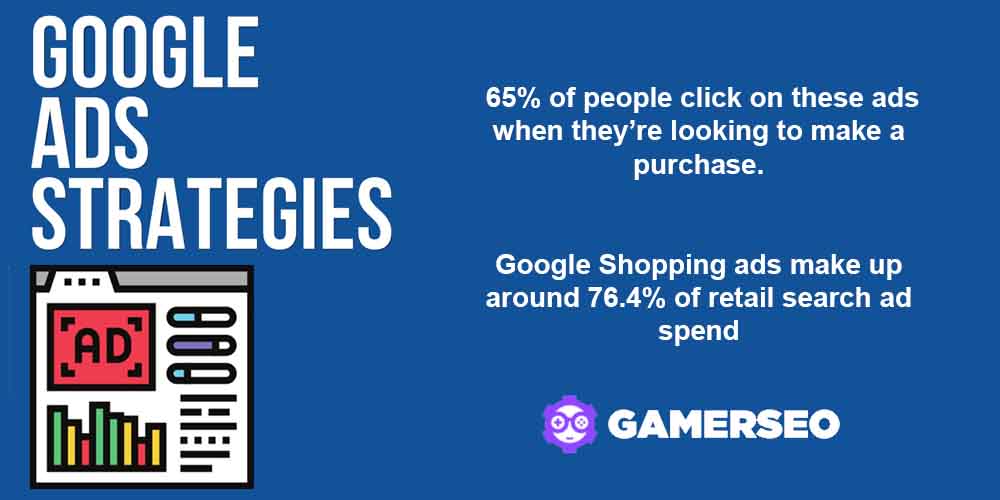
Source: Thesocialshephred.
Through Google ads Strategies, you can maximize efforts and improve results regarding your goals. Some crucial strategies you should implement are the following:
- Smart bidding strategies. They use machine learning to adjust bids according to likelihood and conversions. This way, you can bid on the right keywords.
- Track and measure advertisements to improve conversion rate. Testing your ads is a must-do practice to improve results and performance. It includes A/B testing, ad copy, landing page optimization, and more.
- Remarketing to target segments. Creating custom audiences will allow you to remarket them through email marketing and other strategies to improve relevancy.
- Use negative keywords. Utilizing this type of keywords will allow you to avoid unwanted visitors and clients and focus on prospects with high intent.
There are several other strategies to improve your Google Ads digital advertising campaign. To find out everything, read our related articles.
Google Ads Example / Case Study / Success Story
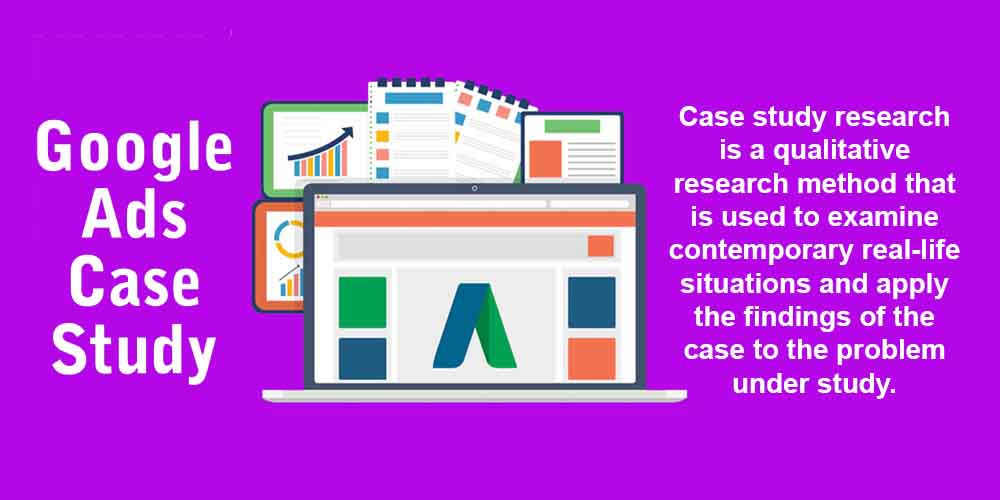
Source: Tutorialspoint.
Google Ads examples, case studies, and success stories are great for understanding how an ad campaign may work. This way, you can learn a lot from past cases and understand the phenomena around Google Ads marketing and app campaigns, to obtain more website sales.
But you can’t choose just a random case study or success story. The case study should be related to your industry, business size, types of ads, and other aspects. Some tips for selecting the right case study and success story are the following:
- Identify the right research questions.
- Select the case.
- Collect the data.
- Evaluate the data.
- Present results.
Google Ads Management Services

Source: Webfx.
As a final statement, we need to mention that it’s recommended to consider hiring Google Ads management services to achieve all the advertising goals of your Google Ads campaign. Professionals in the industry can help you manage your Google Ads account and deliver the best strategies and campaigns. It will help you to save time, money, and effort and allocate them to other relevant actions.
Again, GamerSEO is the right partner when it comes to managing your Google Ads account, creating your ad, and analyzing and adjusting your strategies and campaigns for success.
Let’s talk! Regardless of your goals, we can get qualified traffic, more visitors, leads, and conversions on your behalf! Working with GamerSEO is the first step to the hall of fame of advertising on Google Ads.
The Bottom Line
Keep in mind that this article serves as an introduction to each described concept. Check out our detailed guides related to all the points mentioned above. In these articles, we delve into each topic, giving you examples, statistics, cases, and more! We invite you to browse our blog and get acquainted with all the information we have for you.

A PPC specialist who started with organic social media. For several years, the core of his activities are:- Google Ads, Microsoft Ads, Meta Ads, TikTok Ads, Twitter Ads, Linkedin Ads. He has led campaigns with a global reach, e.g. for FootballTeam, G2A, ETOTO, as well as many smaller campaigns in the sports, construction and financial industries. Has full focus on ROAS. Privately, a fan of football, history of wars and Star Wars.

